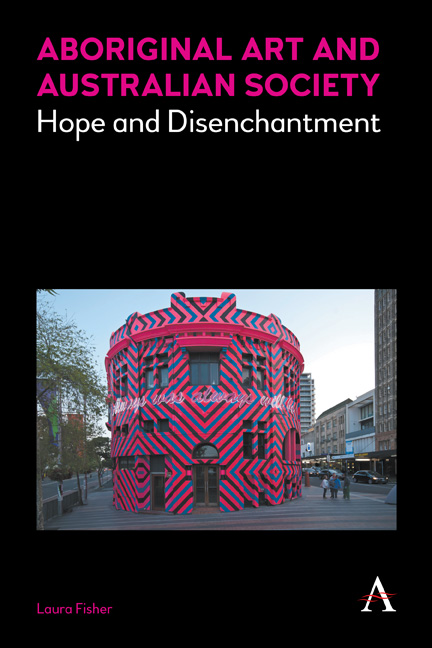Book contents
- Frontmatter
- Dedication
- Contents
- Preface and Acknowledgements
- Introduction
- Part I Governance, Nationhood and Civil Society
- Chapter 1 New Intercultural Relationships in the Post-Assimilation Era
- Chapter 2 Aboriginal People Mobilising Aboriginal Art
- Chapter 3 Understanding Aboriginal Art Subsidy
- Chapter 4 The State Mobilising Aboriginal Art
- Chapter 5 ‘Aboriginal Culture’ at the Nexus of Justice, Recognition and Redemption
- Part II Contemporary Aboriginal Art in the 1980s
- Part III Negotiating Difference
- Part IV Aboriginal Art, Money and the Market
- Conclusion
- Notes
- References
- Index
Chapter 1 - New Intercultural Relationships in the Post-Assimilation Era
from Part I - Governance, Nationhood and Civil Society
Published online by Cambridge University Press: 22 July 2017
- Frontmatter
- Dedication
- Contents
- Preface and Acknowledgements
- Introduction
- Part I Governance, Nationhood and Civil Society
- Chapter 1 New Intercultural Relationships in the Post-Assimilation Era
- Chapter 2 Aboriginal People Mobilising Aboriginal Art
- Chapter 3 Understanding Aboriginal Art Subsidy
- Chapter 4 The State Mobilising Aboriginal Art
- Chapter 5 ‘Aboriginal Culture’ at the Nexus of Justice, Recognition and Redemption
- Part II Contemporary Aboriginal Art in the 1980s
- Part III Negotiating Difference
- Part IV Aboriginal Art, Money and the Market
- Conclusion
- Notes
- References
- Index
Summary
The Aboriginal art phenomenon has been shaped by a range of cultural and Indigenous governance approaches that reflect the changing status of Aboriginal heritage, subjectivity and culture in Australian public life. In this chapter, I focus on the political events and legislative reforms that brought Aboriginal culture into being in Australian public life and came to anchor citizens’ understandings of what it comprised. Fred Myers has aptly pointed out that Aboriginal fine art has been constituted by an intercultural process of ‘culture making’ through ‘historically and institutionally specific mediations […] of art, of Aboriginal administration, of governmentality’ (2002, 351; see also Merlan 1998). In what follows I hope to shed light on the dialectic nature of this process. Not only has Aboriginal art acquired meaning and value as fine art through this process of culture making but it has also galvanized, through its circulation as a positive aesthetic signifier of Aboriginality, wider processes of culture making in the context of social and political negotiations of the settler state condition.
Cultural Trauma in Australian Public Culture
To begin, the history reviewed in this section can be appraised through the lens of cultural trauma, a concept theorised by cultural sociologists such as Jeffrey Alexander (2003) and Ron Eyerman (2004) to elucidate the lasting social ramifications of the Holocaust, the September 11 attacks and the history of slavery in the United States. The concept is usefully summarised by Alexander when he writes that ‘it is by constructing cultural traumas that social groups, national societies, and sometimes even entire civilisations not only cognitively identify the existence and source of human suffering but “take on board” some significant responsibility in it’ (2003, 85). The cultural dimension rests in the memorialising narratives and other representations that constitute this shared sense of victimisation in relation to a devastating event or process, representations that are created and disseminated within the arenas of the mass media, academia, policy, religion and the arts, for example. Together these mediations identify the victims, define the nature of the unjust act, present the victims’ experiences in a way that corresponds to principles acceptable to the wider population and attribute responsibility for the past injustices to the state and particular social groups.
- Type
- Chapter
- Information
- Aboriginal Art and Australian SocietyHope and Disenchantment, pp. 17 - 30Publisher: Anthem PressPrint publication year: 2016

